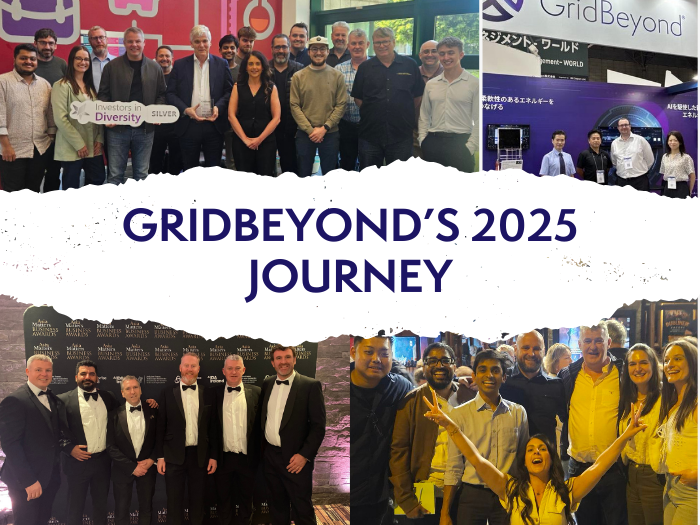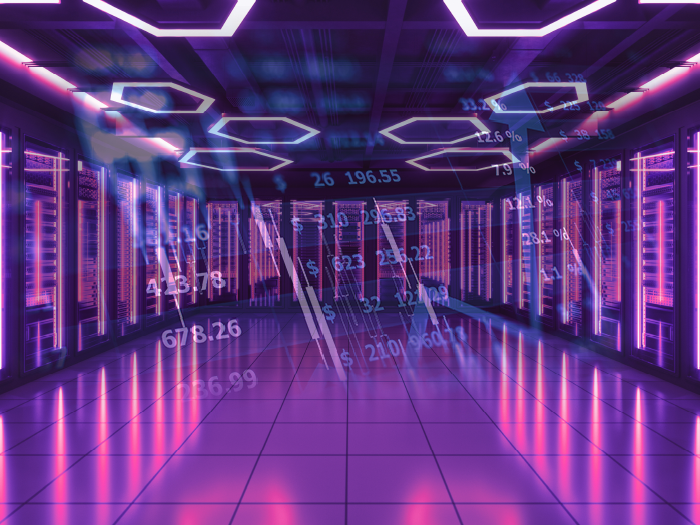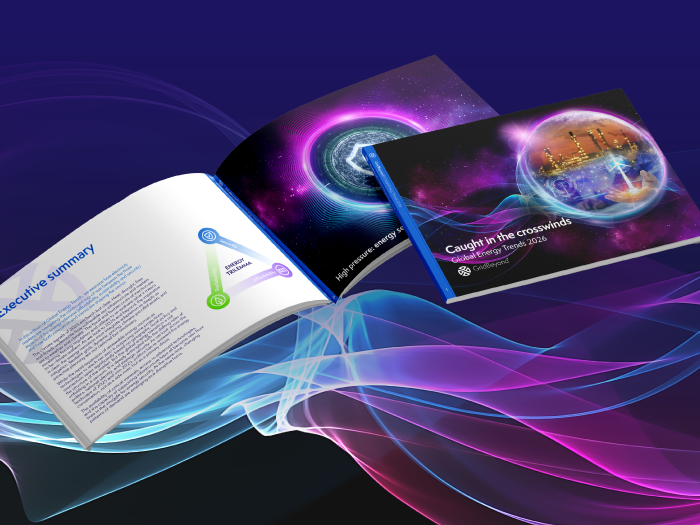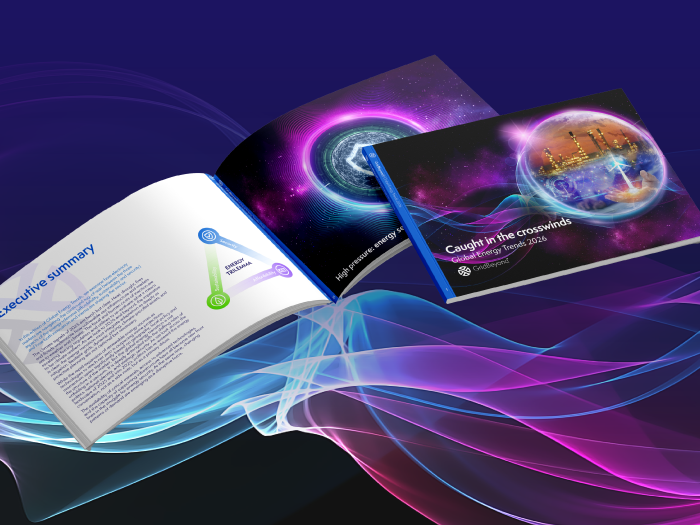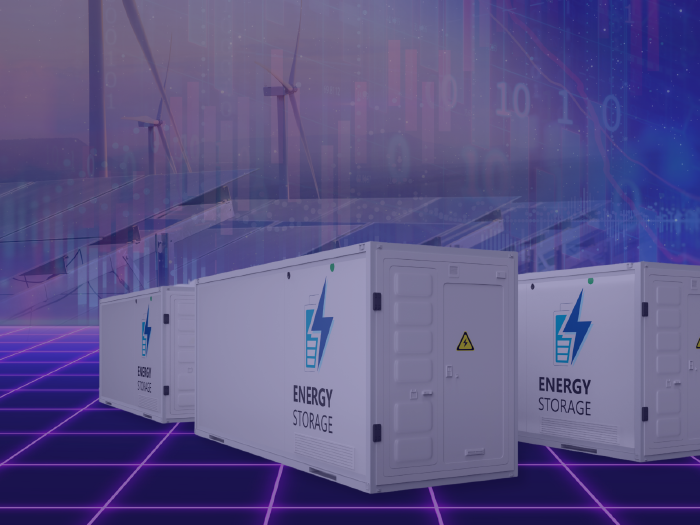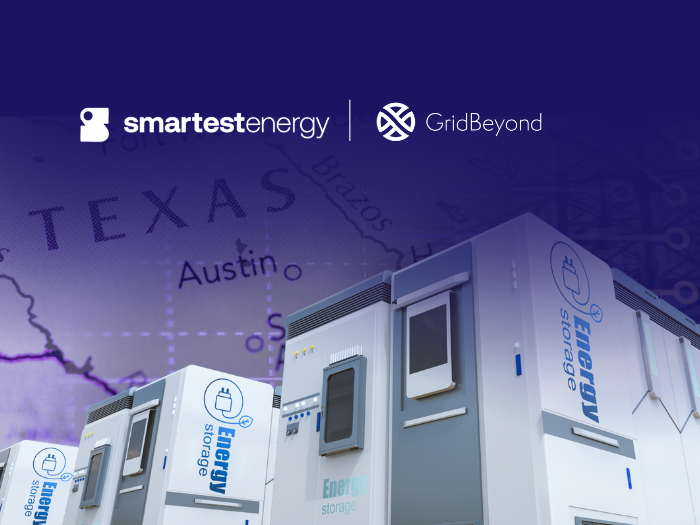News
better business decisions
Posted 1 year ago | 6 minute read
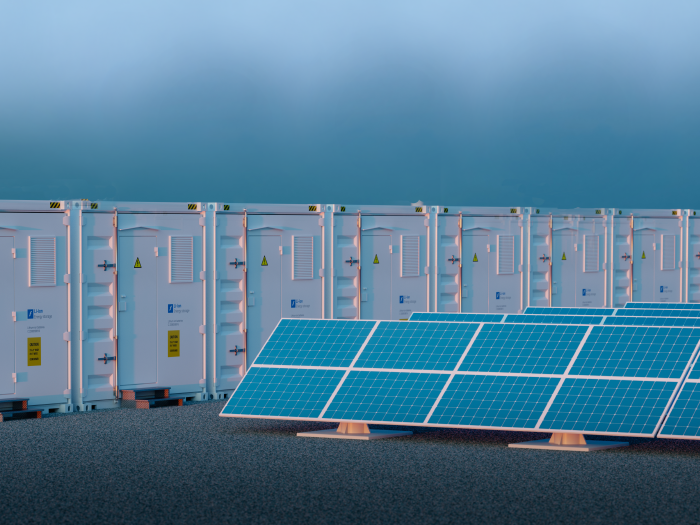
Navigating the gridlock
The transition to a net zero energy future is facing a significant challenge: grid connection delays. As a result businesses are revising their clean energy targets and considering alternative solutions. In this article we look at the causes and what businesses can do to mitigate the risk.
Rising demand
In the UK, demand for electricity is expected to increase from 120GW to 300GW by 2035. The Climate Change Committee’s Balanced Pathway scenario for delivery of net zero by 2050, which has informed the Government’s plan for delivering the Sixth Carbon Budget, projects annual electricity demand to be around 50% higher than pre-Covid levels in 2035 and 100% higher by 2050. But the Environmental Audit Committee has concluded that many planned renewable energy projects are being hampered by problems accessing the electricity grid, including slow connections, limited capacity, inappropriate planning regulations and market uncertainty.
It is estimated the current queue to connect contains more than twice the amount of generation required to meet the government’s target of decarbonising the energy system by 2035. But projects being unable to access the grid could make that target harder to achieve. This backlog is due in part to an outdated first-come-first-served connection model and “zombie projects,” which lack financing or land ownership.
The energy regulator Ofgem and the Electricity System Operator (ESO) have attempted to speed up the system by requiring projects to meet key “milestones” like securing planning permission. Businesses that fail to meet such milestones could lose their place in the queue. However, the Committee’s report finds that early evidence suggests these changes have not yet reduced the length of the connection queue.
According to Ofgem, over half of generation customers in the transmission queue today (i.e. holding connection agreements) have a connection offer date at least 5 years in the future, with over 10% due to wait 10 years or more. This trend is continuing, with 70% of recent applicants (offered in the last 12 months) receiving connection dates that are 5 or more years away and over a quarter receiving connection dates beyond 2032 – some beyond 2037. Many of these are large, complex projects with long lead times, but the wait is still too long.
The Environmental Audit Committee recommended that the Government and Ofgem actively monitor and streamline initiatives designed to deliver grid connections faster. In particular, it recommends that Ofgem review its milestone queue reforms, with a focus on advancing projects that are demonstrably ready to the front of the queue. The report also found that the planning system risks being a “bottleneck” to the rollout of energy infrastructure, as local authorities often lack the resources or in-house knowledge to accelerate clean energy projects. It recommends the government develop a plan to ensure local authorities have the personnel and expertise they need to reach planning decisions quickly while engaging with local communities.
The challenge for businesses
This gridlock creates an uphill battle for businesses who are investing heavily in renewable energy technologies only to find themselves unable to connect .
Solar energy systems are designed to generate electricity during daylight hours when sunlight is available. But, solar generation does not always align with the energy consumption patterns of most users, which often peak in the morning and evening. As a result, there is frequently an excess of generated solar power during the day that the system cannot immediately use. The common practice is to feed this excess energy back into the grid, while this offers some financial return, tariffs are generally much lower than the cost of electricity purchased from the grid. This discrepancy leads to missed economic opportunities for the solar energy system owner.
In addition, feeding excess solar power back into the grid does not maximise the carbon reduction potential of the generated energy. By exporting energy, users effectively allow the grid to offset some fossil fuel generation, but this benefit could be greater if the energy were used directly by the consumer, reducing their reliance on grid power derived from non-renewable sources.
Opportunities for businesses
For companies seeking a way around these grid challenges, GridBeyond provides a vital solution.
GridBeyond understands the complexities of battery storage technologies and will work with you to install on-site battery storage system that provides clean, stable and uninterrupted energy supply, eliminating the risk of grid disruption and connections delays.
Solar panel batteries, also known as solar battery storage systems, work by storing the excess energy produced by solar panels during the day, for later use when the sun isn’t shining. There are two main battery technologies currently used, lithium-ion and lead-acid, both of which are designed to handle the cyclic charging and discharging required for solar energy storage.
When sunlight hits a solar panel, the solar cells in the panel convert the sunlight into electrical energy in the form of direct current (DC). This DC electricity then flows to the inverter, which converts the DC into alternating current (AC) that can be used to power a site. If the demand for electricity is less than that being generated, then the DC can be taken from the solar panels and used to charge a battery.
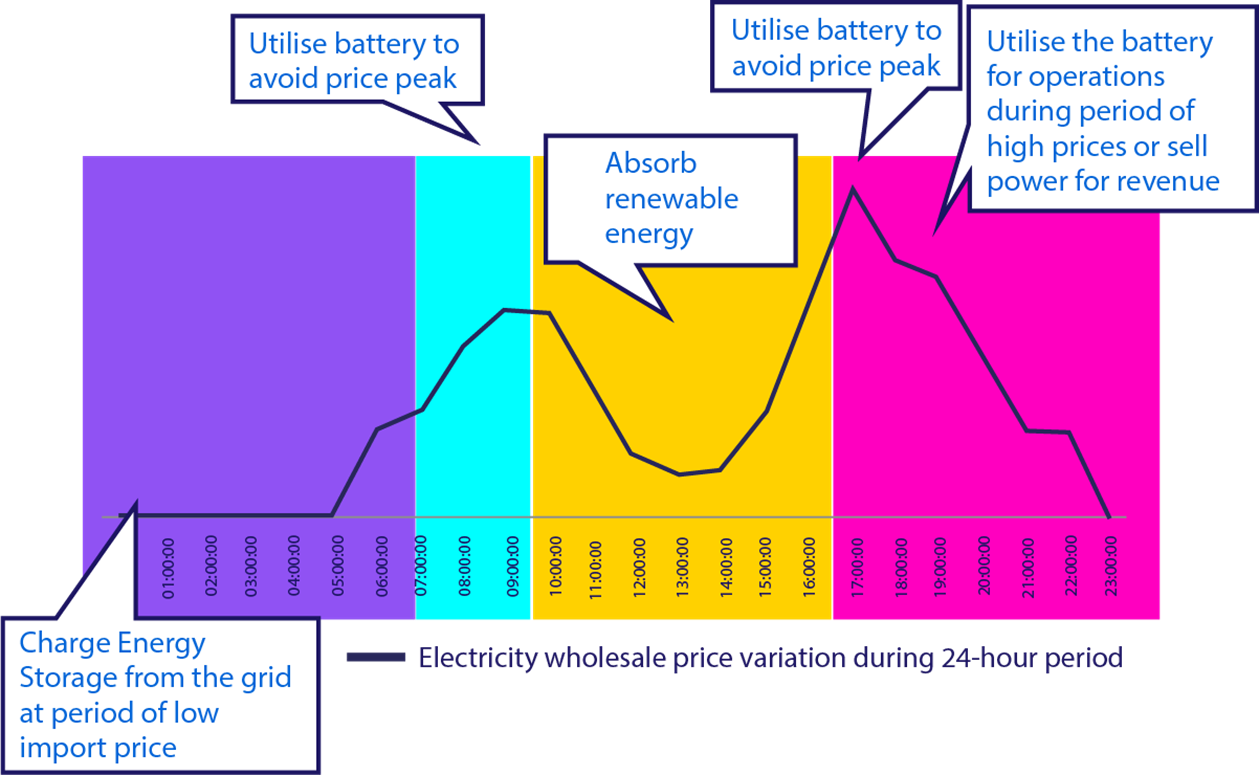
Source: GridBeyond
This approach offers multiple advantages:
- By storing excess solar energy and using it during peak demand times, consumers can significantly reduce their reliance on expensive grid electricity. Solar energy is cheaper to produce than purchasing electricity from the grid, leading to substantial cost savings over time, while providing a long-term hedge for a portion of energy needs
- By consuming stored solar energy instead of feeding it back into the grid, users maximise their use of carbon-free energy (CFE). This not only reduces their carbon footprint but also enhances the overall environmental benefits of their solar investment. It also this also accelerates progress towards their sustainability objectives such as Science Based Targets initiative (SBTi) and RE100
- By installing a battery, larger solar systems can be installed than would otherwise be practical, maximising the value of available roof space. The excess energy generated can be stored rather than wasted, leading to increased CFE volume and greater overall energy independence
- The battery provides a buffer against grid outages and fluctuations, offering increased energy security and reliability for users. During grid failures, stored solar energy can ensure continuous power supply, enhancing resilience and avoid costly production downtime
GridBeyond’s advanced solar and battery systems enable businesses to generate and manage their own energy, reducing grid dependence and offering a path toward decarbonisation that doesn’t hinge on a lengthy connection queue – all at no up-front cost to your business.
Benefit from over 15 years of GridBeyond‘s expertise to accelerate your journey towards net zero. Let us assist you in developing your customised energy ecosystem. We seamlessly integrate multiple energy solutions on-site and leverage GridBeyond‘s cutting-edge AI technology to optimise performance.

CaPex-Free Battery | Resilience, carbon reduction and revenue
Our AI-powered platform, ensures that full power resilience is delivered instantaneously, preventing disruption to even the most sensitive equipment.
Learn more